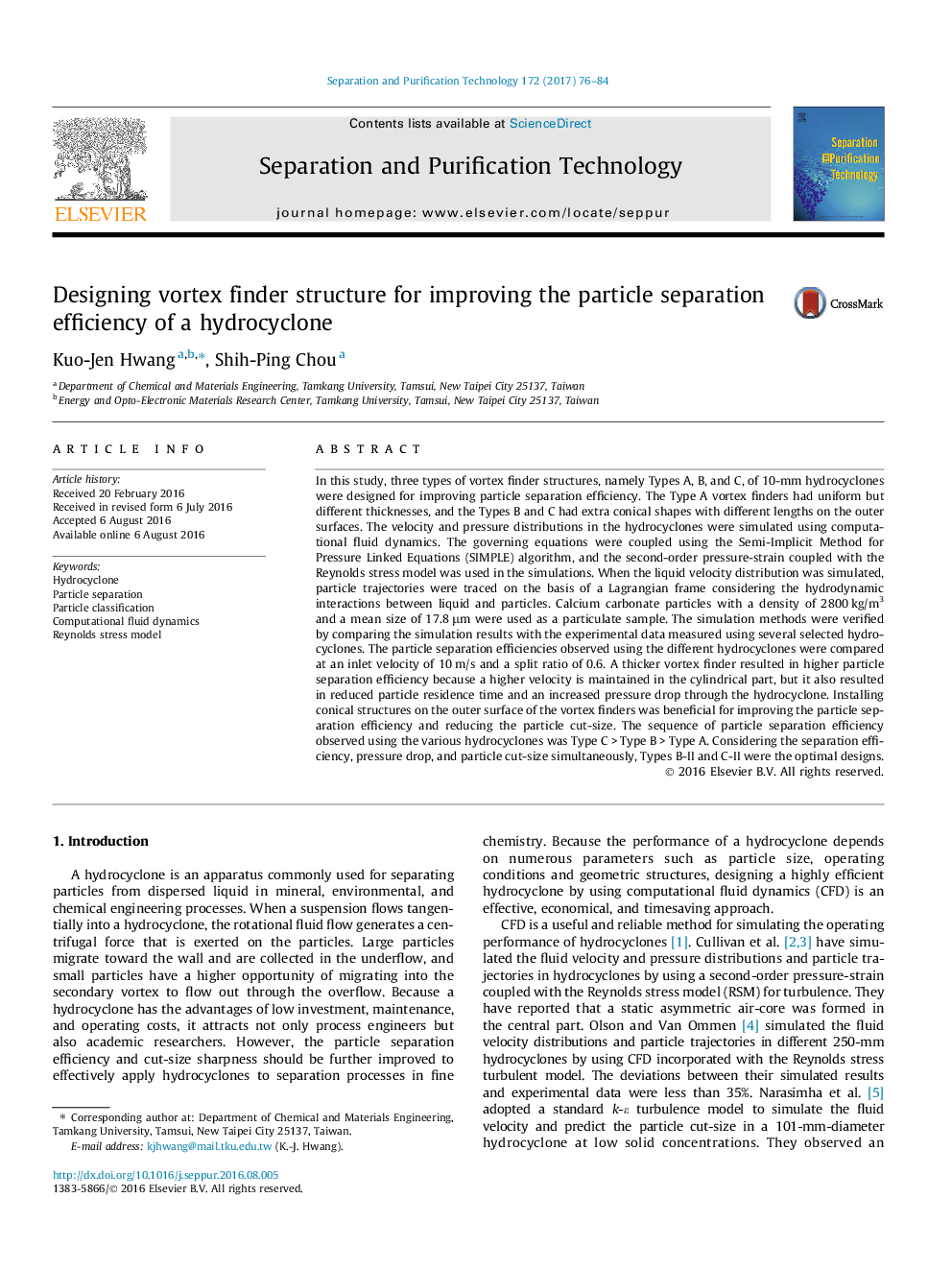| کد مقاله | کد نشریه | سال انتشار | مقاله انگلیسی | نسخه تمام متن |
|---|---|---|---|---|
| 639744 | 1456948 | 2017 | 9 صفحه PDF | دانلود رایگان |
عنوان انگلیسی مقاله ISI
Designing vortex finder structure for improving the particle separation efficiency of a hydrocyclone
ترجمه فارسی عنوان
طراحی ساختار گرداب گردان برای بهبود کارایی جداسازی ذرات یک هیدروسکلون
دانلود مقاله + سفارش ترجمه
دانلود مقاله ISI انگلیسی
رایگان برای ایرانیان
کلمات کلیدی
هیدروسیکلون، جداسازی ذرات، طبقه بندی ذرات، دینامیک سیالات محاسباتی، مدل استرس رینولدز،
موضوعات مرتبط
مهندسی و علوم پایه
مهندسی شیمی
تصفیه و جداسازی
چکیده انگلیسی
In this study, three types of vortex finder structures, namely Types A, B, and C, of 10-mm hydrocyclones were designed for improving particle separation efficiency. The Type A vortex finders had uniform but different thicknesses, and the Types B and C had extra conical shapes with different lengths on the outer surfaces. The velocity and pressure distributions in the hydrocyclones were simulated using computational fluid dynamics. The governing equations were coupled using the Semi-Implicit Method for Pressure Linked Equations (SIMPLE) algorithm, and the second-order pressure-strain coupled with the Reynolds stress model was used in the simulations. When the liquid velocity distribution was simulated, particle trajectories were traced on the basis of a Lagrangian frame considering the hydrodynamic interactions between liquid and particles. Calcium carbonate particles with a density of 2800 kg/m3 and a mean size of 17.8 μm were used as a particulate sample. The simulation methods were verified by comparing the simulation results with the experimental data measured using several selected hydrocyclones. The particle separation efficiencies observed using the different hydrocyclones were compared at an inlet velocity of 10 m/s and a split ratio of 0.6. A thicker vortex finder resulted in higher particle separation efficiency because a higher velocity is maintained in the cylindrical part, but it also resulted in reduced particle residence time and an increased pressure drop through the hydrocyclone. Installing conical structures on the outer surface of the vortex finders was beneficial for improving the particle separation efficiency and reducing the particle cut-size. The sequence of particle separation efficiency observed using the various hydrocyclones was Type C > Type B > Type A. Considering the separation efficiency, pressure drop, and particle cut-size simultaneously, Types B-II and C-II were the optimal designs.
ناشر
Database: Elsevier - ScienceDirect (ساینس دایرکت)
Journal: Separation and Purification Technology - Volume 172, 1 January 2017, Pages 76-84
Journal: Separation and Purification Technology - Volume 172, 1 January 2017, Pages 76-84
نویسندگان
Kuo-Jen Hwang, Shih-Ping Chou,
